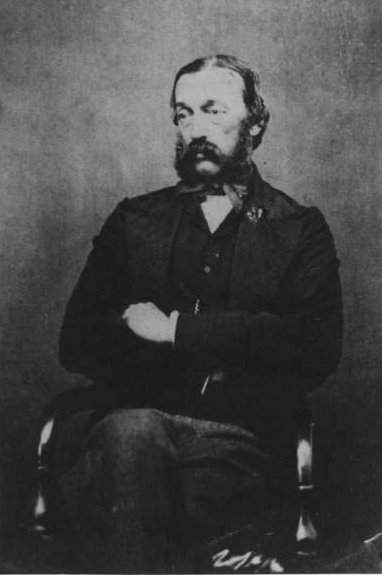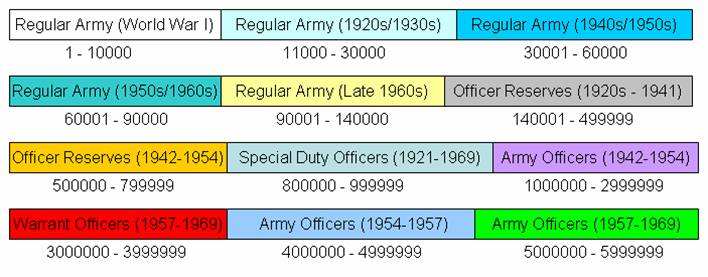|
135th (Limerick) Regiment Of Foot
The 135th (Limerick) Regiment of Foot was an infantry regiment of Fencibles in the British Army The British Army is the principal Army, land warfare force of the United Kingdom. the British Army comprises 73,847 regular full-time personnel, 4,127 Brigade of Gurkhas, Gurkhas, 25,742 Army Reserve (United Kingdom), volunteer reserve perso ..., created and promptly disbanded in 1796. The regiment, raised by Sir Vere Hunt, did not see any active service; it served solely to recruit soldiers. On disbandment, the recruits were drafted into other regiments. The regiment has the interesting historical distinction of having had the highest regimental number of any British line regiment. References {{Regiments of Foot Infantry regiments of the British Army Military units and formations established in 1796 Military units and formations disestablished in 1796 Fencible regiments of the British Army Defunct Irish regiments of the British Army 1796 establishments in Great Britain ... [...More Info...] [...Related Items...] OR: [Wikipedia] [Google] [Baidu] |
Regiment
A regiment is a military unit. Its role and size varies markedly, depending on the country, military service, service, or administrative corps, specialisation. In Middle Ages, Medieval Europe, the term "regiment" denoted any large body of line regiment, front-line soldiers, recruited or conscripted in one geographical area, by a leader who was often also the feudal lord ''in capite'' of the soldiers. Lesser barons of knightly rank could be expected to muster or hire a Company (military unit), company or battalion from their manorial estate. By the end of the 17th century, infantry regiments in most European armies were permanent units, with approximately 800 men and commanded by a colonel. Definitions During the modern era, the word "regiment" – much like "corps" – may have two somewhat divergent meanings, which refer to two distinct roles: # a front-line military formation; or # an administrative or ceremonial unit. In many armies, the first role has been assumed by i ... [...More Info...] [...Related Items...] OR: [Wikipedia] [Google] [Baidu] |
Fencibles
The Fencibles (from the word ''defencible'') were British regiments raised in the United Kingdom, Isle of Man and in the colonies for defence against the threat of invasion during the Seven Years' War, the American War of Independence, the French Revolutionary Wars, the Napoleonic Wars and the War of 1812 in the late 18th and early 19th centuries. Usually temporary units, composed of local recruits and commanded by Regular Army officers, they were most often confined to garrison and patrol duties, freeing Regular Army units to perform offensive operations. Most fencible regiments had no liability for overseas service. They included naval forces known as "River Fencibles", made up of sailors on the Thames and other southern English towns and cities, as well as Sea Fencibles, who, among their other duties, crewed small commercial vessels converted to coastal defence. History The first regiments were raised in Scotland in 1759. In England county militia regiments were raised fo ... [...More Info...] [...Related Items...] OR: [Wikipedia] [Google] [Baidu] |
British Army
The British Army is the principal Army, land warfare force of the United Kingdom. the British Army comprises 73,847 regular full-time personnel, 4,127 Brigade of Gurkhas, Gurkhas, 25,742 Army Reserve (United Kingdom), volunteer reserve personnel and 4,697 "other personnel", for a total of 108,413. The British Army traces back to 1707 and the Acts of Union 1707, formation of the united Kingdom of Great Britain which joined the Kingdoms of Kingdom of England, England and Kingdom of Scotland, Scotland into a Political union, single state and, with that, united the English Army and the Scots Army as the British Army. The Parliament of England, English Bill of Rights 1689 and Convention of the Estates, Scottish Claim of Right Act 1689 require parliamentary consent for the Crown to maintain a peacetime standing army. Members of the British Army swear allegiance to the Charles III, monarch as their commander-in-chief. The army is administered by the Ministry of Defence (United Kingd ... [...More Info...] [...Related Items...] OR: [Wikipedia] [Google] [Baidu] |
Vere Hunt
Sir Vere Hunt, 1st Baronet of Currah (1761 – 11 August 1818) was an Irish politician, landowner and businessman. He is chiefly remembered for founding the village of New Birmingham in County Tipperary, for his ill-advised purchase of the island of Lundy, and for his entertaining diary. He was a colourful character, who was noted for his heavy drinking and gambling, but also for his intellectual interests, and his stern criticism of his own class. Family He was the son of Vere Hunt of Curragh, County Limerick and Glengoole, County Tipperary, by his second wife, Anne Browne, daughter of Edmund Browne of New Grove, County Clare and his wife Jane Westropp, and sister of Montfort Browne, who was Lieutenant Governor of West Florida and then Governor of the Bahamas. His father was the eldest son of the Reverend Vere Hunt (died 1759), and his wife Constantia Piers, granddaughter of Sir Henry Piers, 1st Baronet. He was a descendant of the Earls of Oxford through Jane de Vere, a g ... [...More Info...] [...Related Items...] OR: [Wikipedia] [Google] [Baidu] |
Regimental Number
A service number or roll number is an identification code used to identify a person within a large group. Service numbers are most often associated with the military; however, they also may be used in civilian organizations. National identification numbers may be seen as types of service numbers. The term "serial number" is often seen as a synonym of service number; however, a serial number more accurately describes manufacture and product codes, rather than personnel identification. In the Canadian military, a "serial number" referred to a unique number assigned each unit that mobilized for the Second World War. Australia In the First Australian Imperial Force soldiers were allotted numbers known as regimental numbers. These were allotted to NCOs and other ranks but not to officers or nurses, who had no numbers. Regimental numbers were rarely unique. Each battalion or corps had its own sequence, usually starting at 1, although some units were formed in the field and this did not ... [...More Info...] [...Related Items...] OR: [Wikipedia] [Google] [Baidu] |
Infantry Regiments Of The British Army
Infantry, or infantryman are a type of soldier who specialize in ground combat, typically fighting dismounted. Historically the term was used to describe foot soldiers, i.e. those who march and fight on foot. In modern usage, the term broadly encompasses a wide variety of subspecialties, including light infantry, irregular infantry, heavy infantry, mountain infantry, motorized infantry, mechanized infantry, airborne infantry, air assault infantry, and naval infantry. Other subtypes of infantry, such as line infantry and mounted infantry, were once commonplace but fell out of favor in the 1800s with the invention of more accurate and powerful weapons. Etymology and terminology In English, use of the term ''infantry'' began about the 1570s, describing soldiers who march and fight on foot. The word derives from Middle French , from older Italian (also Spanish) ''infanteria'' (foot soldiers too inexperienced for cavalry), from Latin '' īnfāns'' (without speech, newbor ... [...More Info...] [...Related Items...] OR: [Wikipedia] [Google] [Baidu] |
Military Units And Formations Established In 1796
A military, also known collectively as armed forces, is a heavily armed, highly organized force primarily intended for warfare. Militaries are typically authorized and maintained by a sovereign state, with their members identifiable by a distinct military uniform. They may consist of one or more military branches such as an army, navy, air force, space force, marines, or coast guard. The main task of a military is usually defined as defence of their state and its interests against external armed threats. In broad usage, the terms "armed forces" and "military" are often synonymous, although in technical usage a distinction is sometimes made in which a country's armed forces may include other paramilitary forces such as armed police. Beyond warfare, the military may be employed in additional sanctioned and non-sanctioned functions within the state, including internal security threats, crowd control, promotion of political agendas, emergency services and reconstruction, pro ... [...More Info...] [...Related Items...] OR: [Wikipedia] [Google] [Baidu] |
Military Units And Formations Disestablished In 1796
A military, also known collectively as armed forces, is a heavily Weapon, armed, highly organized force primarily intended for warfare. Militaries are typically authorized and maintained by a sovereign state, with their members identifiable by a distinct military uniform. They may consist of one or more military branches such as an army, navy, air force, space force, marines, or coast guard. The main task of a military is usually defined as defence of their state and its interests against external armed threats. In broad usage, the terms "armed forces" and "military" are often synonymous, although in technical usage a distinction is sometimes made in which a country's armed forces may include other paramilitary forces such as armed police. Beyond warfare, the military may be employed in additional sanctioned and non-sanctioned functions within the state, including internal security threats, crowd control, promotion of political agendas, emergency services and reconstructi ... [...More Info...] [...Related Items...] OR: [Wikipedia] [Google] [Baidu] |
Fencible Regiments Of The British Army
The Fencibles (from the word ''defencible'') were British regiments raised in the United Kingdom, Isle of Man and in the Crown colony, colonies for defence against the threat of invasion during the Seven Years' War, the American War of Independence, the French Revolutionary Wars, the Napoleonic Wars and the War of 1812 in the late 18th and early 19th centuries. Usually temporary units, composed of local recruits and commanded by Regular Army officers, they were most often confined to garrison and patrol duties, freeing Regular Army units to perform offensive operations. Most fencible regiments had no liability for overseas service. They included naval forces known as "River Fencibles", made up of sailors on the Thames and other southern English towns and cities, as well as Sea Fencibles, who, among their other duties, crewed small commercial vessels converted to coastal defence. History The first regiments were raised in Scotland in 1759. In England county militia regiments wer ... [...More Info...] [...Related Items...] OR: [Wikipedia] [Google] [Baidu] |
Defunct Irish Regiments Of The British Army
{{Disambiguation ...
Defunct may refer to: * ''Defunct'' (video game), 2014 * Zombie process or defunct process, in Unix-like operating systems See also * * :Former entities * End-of-life product * Obsolescence Obsolescence is the process of becoming antiquated, out of date, old-fashioned, no longer in general use, or no longer useful, or the condition of being in such a state. When used in a biological sense, it means imperfect or rudimentary when comp ... [...More Info...] [...Related Items...] OR: [Wikipedia] [Google] [Baidu] |



